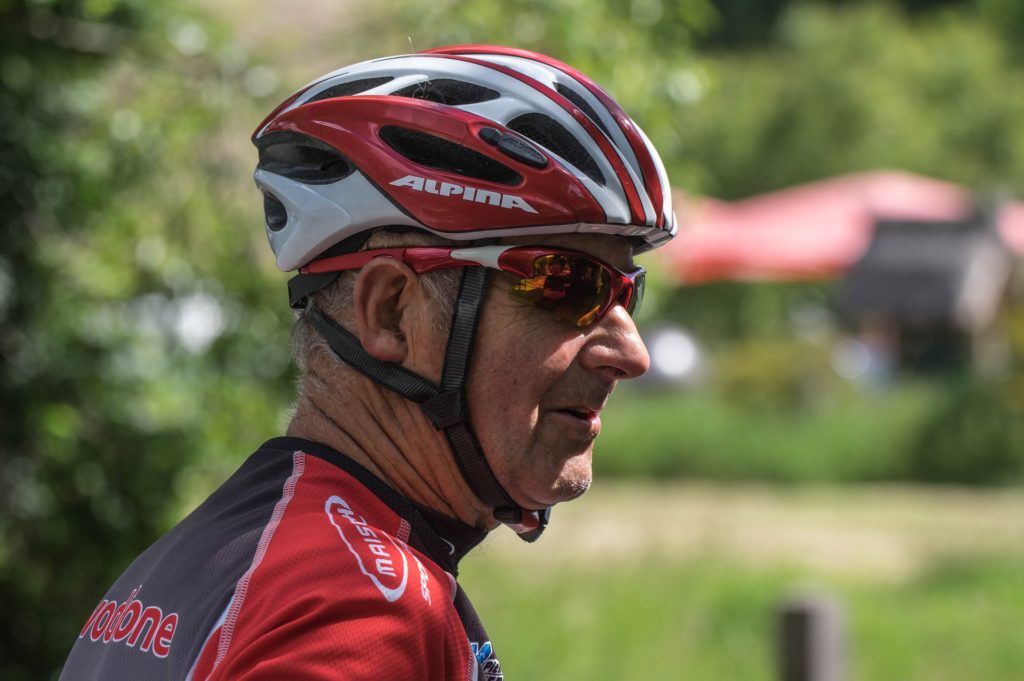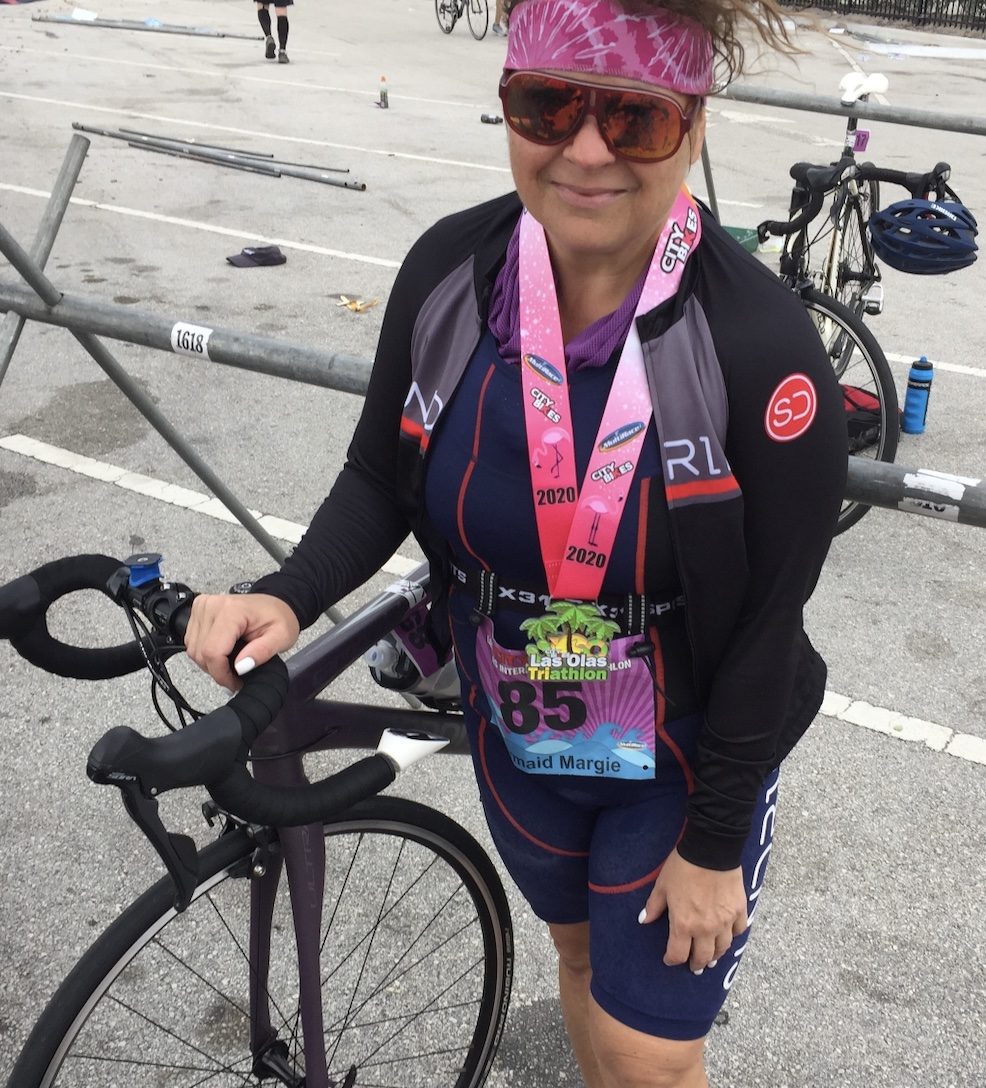How to Get Started in Triathlons If You’re Over 50

If you had told me at age 40 that I would do my first triathlon at 51, I would have laughed. Me? A triathlete? But I did, without being much of an athlete before then.
How did I do it? With planning, good information, and a training buddy, which I highly recommend. These factors, along with the thumbs up from your doctor, can also help you to complete your first triathlon after 50.
Read on for some tips on how to get started tri’ing!
Keep Your Body Healthy
I feel great, but I also have to work much harder than I did when I was younger. That might have something to do with the fact that after 50, muscle mass and bone density decrease quickly.
Here Are Some Tips for How to Get Started in Triathlons if You’re Over 50:
Eat well. Aim for a diet that makes you feel good — this can be anything from a Mediterranean diet, to a plant-based one, to keto. Choose foods before and after your workout that give you energy and provide recovery. To give you an idea of what to eat before a workout, a suggested race day breakfast includes 30% protein, 60% carbs, and 10% fat.
Build muscle, says Graham Wilson, 68, a USA Triathlon Level III Certified Coach and seven-time Ironman finisher, who trains triathletes internationally, including many over 50. He suggests two to three strength sessions per week, starting with low weights and reps then slowly increasing weights but keeping the reps low. Eventually build to six sets of six reps at heavier weights.
Hydrate often. If you’re feeling thirsty, you’re already dehydrated. Drink more water than you think you need, and if you’re really feeling dehydrated, add in some drinks that have electrolytes to replace minerals lost through sweating. I drink Vitamin water after my runs.
Listen to your body. It will tell you if you’ve done too much. That may mean you take a rest day unexpectedly, or spend extra time stretching.
Supplement as needed. Everybody is different, but I started taking turmeric when I began training for triathlons, and it really helps me prevent joint pain. I also take many other vitamins and minerals. You may find that you need supplements as you increase the amount and types of exercises you do.
Buy great protective equipment. If you’re over 50, you have less padding on your feet. So it makes sense to buy padded running socks. I like the ones from Balega. You’ll also need nicely padded bike shorts or bibs, or triathlon suits, and excellent bike helmets.
Train for the Swim, Bike, and Run Portions of the Triathlon
“I recommend to all my clients new to Tri that their goal should be to have fun and enjoy crossing the finishing line with a smile on their face,” says Wilson.
Most new triathletes have experience with at least one sport prior to training for triathlons, he says. The newer you are to a sport, the more time you should spend training for that portion of the triathlon. If you’re new to any of these sports, here are his top training tips:
Swim
Of all three triathlon sports, this is the one where technique really counts, so get help. Take lessons through local swim centers and triathlete groups, or through a US Masters adult “learn to swim” program. You can also get a swim coach if you need individual help. I hired a swim instructor, and after one lesson, I shaved five minutes off the swim portion of my next triathlon. I also conserved energy by swimming properly. And I needed that extra energy for the other parts of the triathlon.
Bike
For your first triathlon, you don’t need to worry about using bike pedal clips, or buying a “tri” bike. I used an affordable road bike and wore my regular sneakers for my first triathlon, and many other triathletes have the same equipment. You can even get away with a mountain bike or a hybrid to start.
Also, consider joining a local bicycle club for several reasons. First, many cycling clubs provide classes or instruction for new cyclists, and the members can provide ongoing tips and techniques. Second, riding in clubs helps you learn to ride in a group formation, which can be intimidating during a triathlon if you’ve never done it before. Third, it helps provide an incentive to do longer rides — when you’re in a group, you can’t just stop when you’re tired. And finally — it’s a great way to make friends. Local bike shops are good places to find bike clubs. You can also find a club near you through The League of American Bicyclists website.
Run
“Running can be the most challenging part of triathlons, since it’s usually the last leg of the race,” says Wilson.
To become a stronger runner he suggests the following steps:
- Frequency – It is better to do four 15 minute runs than a one hour run.
- Endurance – When you are running more frequently, start increasing the distance gradually, to build endurance.
- Speed – The final stage of running involves speed – make one of your weekly runs a speed session. An example is four fast runs of 400 meters or yards each, with a 400 meter or yard walk recovery in between. Run fast, but don’t sprint.
Race Ready
These tips should start you on your journey to becoming a triathlete at 50 or any age. I look forward to seeing you at the finish line!
Advertisement

Margie Zable Fisher is an over 50 triathlete and professional writer. She has written for Livestrong.com, Insider.com, and many others on the topics of health and fitness.
She is also the founder of The 50-Year-Old Mermaid, where she and other 50+ women share their learnings and experiences on living their best lives after 50.









